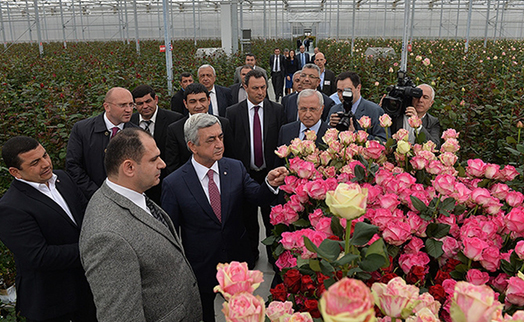YEREVAN, May 19. /ARKA/. The International Monetary Fund (IMF) has lowered the GDP growth projection for the Caucasus and Central Asia by 2 percentage points for 2015.
Growth in the Caucasus and Central Asia (CCA) is expected to decline by 2 percent this year as a result of lower commodity prices and the economic slowdown in Russia, says the latest regional forecast by IMF staff.
The Regional Economic Outlook Update for the Caucasus and Central Asia, released on May 19, predicts growth in the region will reach just over 3 percent this year. This latest forecast represents a downward revision of 2½ percentage points from the one released by the IMF in October 2014.
“The twin shocks of the economic slowdown in Russia, a key trading partner, and lower oil prices are taking a toll on the region,” Juha Kähkönen, Deputy Director of the IMF’s Middle East and Central Asia Department told reporters in Almaty, Kazakhstan.
“Exchange rate developments—such as the appreciation of the U.S. dollar and the depreciation of the ruble—are compounding the problem. Overall, the outlook for the region has not been this weak since the global financial crisis in 2008-09.”
The CCA’s oil and gas exporters—Azerbaijan, Kazakhstan, Turkmenistan, and Uzbekistan—should see growth decline to 3 ½ percent in 2015 from 5½ percent last year. In some of these countries, the impact from lower oil prices and Russia’s contraction is being amplified by a slowdown in domestic oil production and delays in development of new oil fields, the IMF report says.
In the CCA’s oil importers—Armenia, Georgia, the Kyrgyz Republic, and Tajikistan—growth will slow to 1½ percent this year, the report says. These countries are heavily dependent on remittances from Russia, which have fallen sharply. The drop in remittances has erased any gains from lower oil prices, and the current account deficit for these countries is expected to reach 11 percent this year, the IMF says.
As for the region’s medium-term prospects, bold structural reforms will be vital. Policymakers should intensify efforts to enhance the business environment, improve governance, and diversify economies away from their reliance on commodity exports and remittances, the IMF says. –0–








